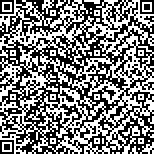下载中心
优秀审稿专家
优秀论文
相关链接
摘要

MODIS的设计目的是能够每隔1-2天测量一次全球范围生物的和物理的过程。我们可以从该仪器提供的数据中获得进一步的地球表面和低层大气的全球动力和过程信息。对MODIS数据,利用遗传算法,首先从大气温度探测波段中,反演得到大气温度廓线信息;然后从水汽波段中获得水汽廓线信息;最后在已有的温、湿廓线基础上,校正测量辐射亮度数据。校正了大气影响后,利用MODIS29, 31, 32大气窗口波段,采用比辐射率约束方法(Emissivity bounds method)缩小波段比辐射率取值范围,然后采用遗传算法实现陆面温度、波段比辐射率等地表参数的同时反演。模拟试验表明,利用遗传算法可以从MODIS数据中获得较为精确的大气廓线信息和地面参数信息,为全球温室效应和全球变化研究提供支持。
MODIS is an EOS facility instrument designed to measure biological and physical processes on a global basis every 1-to-2days. The enhanced knowledge of global dynamics and processes occurring on the surface of earth and in the lower atmosphere can be derived. In this paper, an atmospheric temperature profile is retrieved from MODIS atmospheric temperature sounding bands using genetic algorithms, and then the water vapor profile is derived from MODIS water vapor sounding bands. Once the atmospheric temperature profile and water vapor profile are obtained, the atmospheric radiation could be corrected. The method of emissivity bounds is employed to restrict the range of emissivity of each band. The emissivity limits of final band can be used by genetic algorithm to synchronously retrieve land surface temperature and band emissivities. Simulation experiments show that relatively accurate atmospheric profile and land surface parameters, which play important roles in global warming effect and global change research,can be obtained from MODIS data using genetic algorithms.

